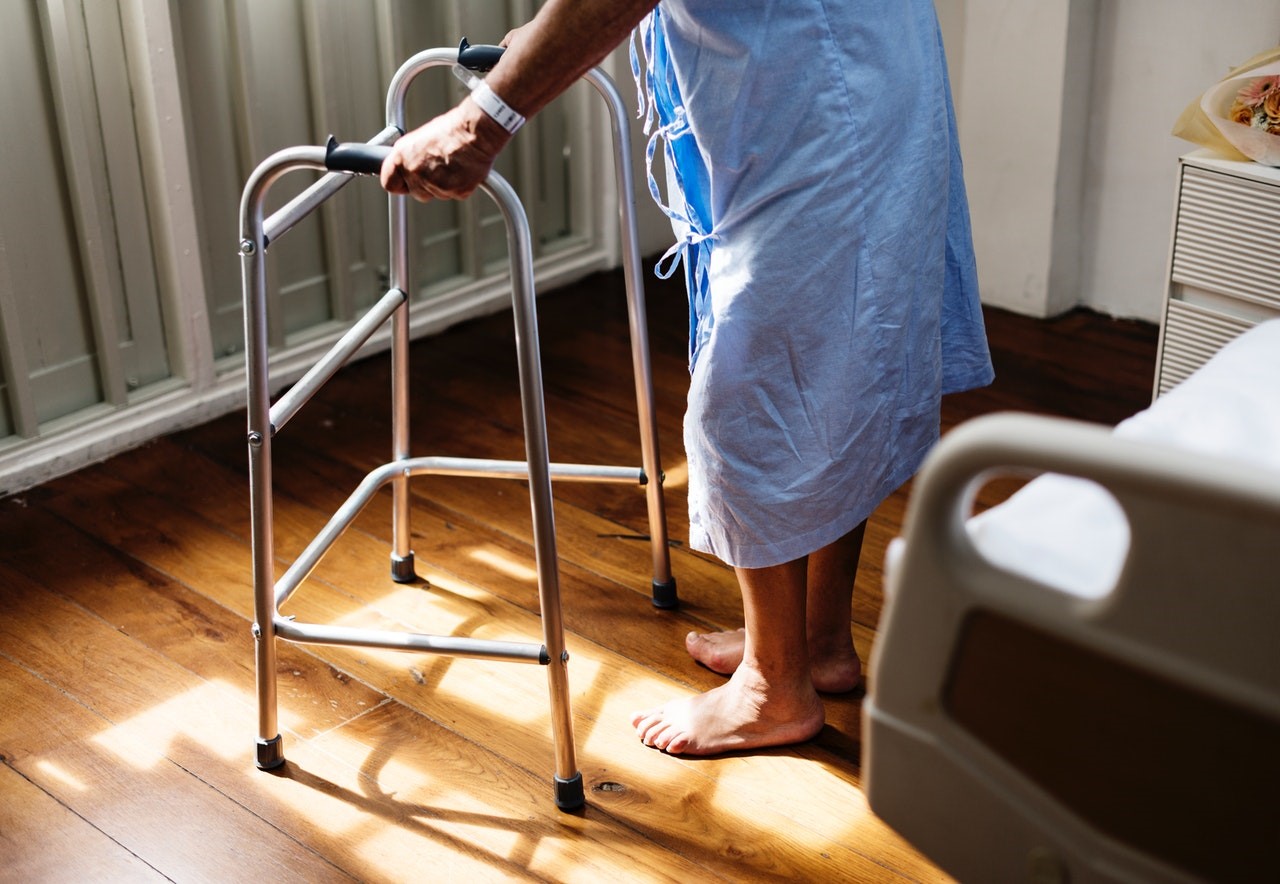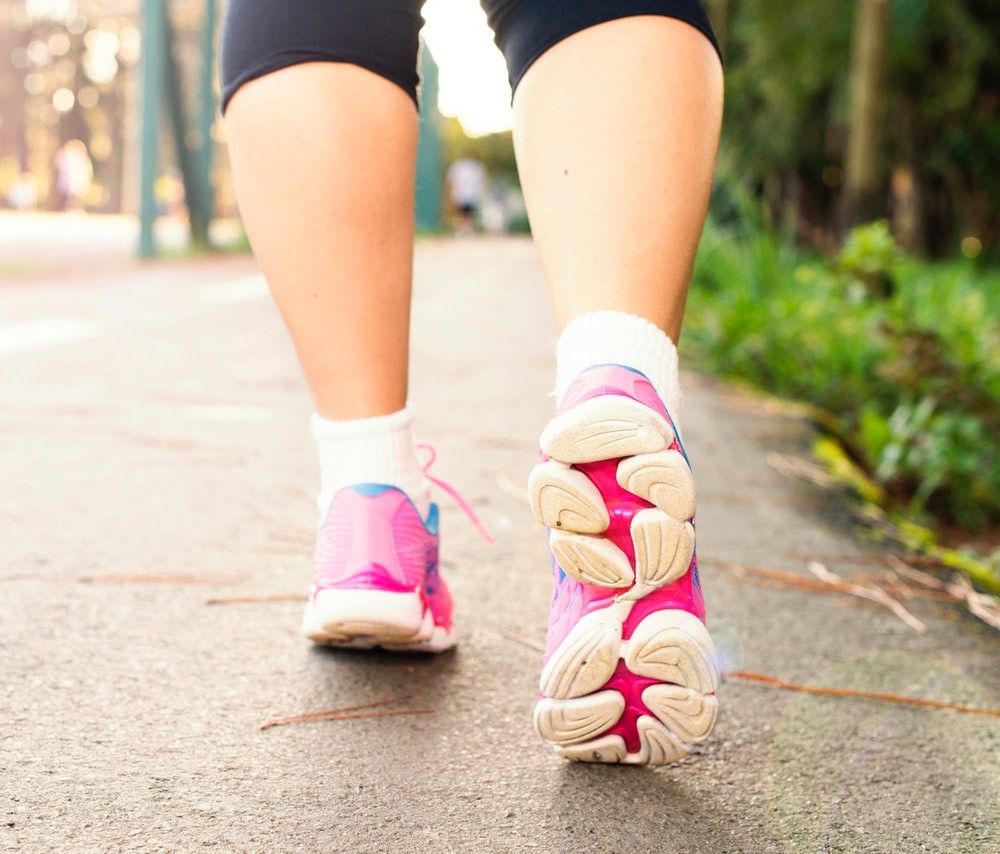How Daily Walking Benefits Seniors (and Tips for Getting Started)
Written by Tye Medical on Apr 6th 2021
If there’s one simple activity that could drastically impact your health for the better at any age – it’s walking. Seniors reap the most benefit from a daily walking routine. The Journal of the American Medical Association published a study concluding that participants ages 70-89 who engaged in daily walking over a 2 ½ year period were 28% less likely to become disabled than their less-active counterparts. If that’s not enough motivation for you, consider the additional ways walking benefits seniors and get some tips on how to start walking daily.
8 Ways Daily Walking Benefits Seniors
1. Increases Mobility
As you age, your body experiences sarcopenia, otherwise known as age-related muscle loss. Over time, this natural muscle loss increases weakness and frailty while decreasing mobility. You can combat this process through safe and simple exercises such as walking. Daily walking increases both muscle tone and your range of motion, notably increasing mobility.
The good news is that it’s not too late! Regardless of your age, you can begin a daily walking
routine and increase
muscle mass in as little as six months. Be sure to consult with your doctor
before beginning any new exercise program, including walking.
2. Prolongs Independence
Because walking increases your mobility, you’re able to stay active and independent longer. When seniors lose their mobility, they’re unable to perform basic self-care tasks and other necessary responsibilities. In these cases, family members will need to step in as caretakers or consider senior housing options for their loved one.
Prolonged independence is the goal for most senior adults and one of the important benefits of walking. Adding a daily walking routine to your schedule can add years of independent living to your life.
3. Combats Disease
According to a study conducted by the AARP and Johns Hopkins University, 4 out of 5 adults age 50 and older suffer from at least one chronic medical condition. If you want to take a big proactive step toward maintaining or improving your health, then walking is great place to start. Daily walking has a positive impact on blood pressure, blood sugar, and blood cholesterol levels. It also reduces your risk of more serious conditions such as stroke, diabetes, heart disease, and certain types of cancer.
Your body was made to move! Even as you age, regular and purposeful movement is crucial to proper body function and general health.
4. Reduces Pain
If you suffer from low back pain, arthritis, or other chronic pain, daily walking is a great way to progressively find relief. Walking strengthens your legs, back, and abdominal muscles. When your muscles are stronger, they alleviate stress on your joints, providing relief from painful conditions like arthritis. Surprisingly, walking also reduces joint inflammation by promoting the circulation of synovial fluid in your joints.
Likewise, backpain sufferers will also find relief in a
daily walking routine. As muscles in your back and abdomen are strengthened
through walking, they hold your spinal column in proper alignment, minimizing
pain by stabilizing your vertebrae. Improved orthopedic health is one of the
many benefits of walking.
5. Boosts Energy and Improves Sleep
You’ve probably heard that moderate exercise, such as walking, boosts your energy. Did you also know that it also improves sleep quality? The two advantages are related.
One of the many benefits of walking is that it improves circulation and increases the amount of oxygen to the brain. This oxygen surge boosts both mental and physical energy. Your metabolic rate and hormone levels (like endorphins) also increase during and after a round of walking and contribute to increased energy levels.
Improved sleep is another benefit of daily walking. When you expend more energy during the day, your body is in greater need of rest at night. Even if your mind is sleepy, your body must be relieved of excess stress and energy in order to enter a deep state of relaxation. When you expend energy during your daily walk, you’ll sleep better at night.
6. Improves Mental Health
Anxiety is a common mental health condition among seniors that has many physical health implications as well, including contributing to Overactive Bladder Syndrome (OAB). Daily walking reduces anxiety and depression and improves mood. The surge of endorphins released through moderate exercise give you a sense of well-being and positivity that’s lacking in a sedentary lifestyle. Walking also helps you break free from preoccupying thoughts and internal musings that promote worry and hopelessness. In other words, it’s is a great way to clear your mind and move your body at the same time.
In addition, many seniors benefit from walking with a spouse, other family member, or friend, which adds a social component that elevates mood and improves mental health.
7. Aids in Weight Control
Researches have made some surprising discoveries concerning walking and weight control. Here are two noteworthy facts:
- A brisk, one-hour walk each day reduced the effectiveness of obesity-promoting genes by nearly 50%.
- A short walk can curb sugar cravings by reducing stress and temptation.
Most seniors don’t need to walk for an hour, but this information helps you understand how important walking is for weight control.
8. Reduces Overall Inflammation
Walking benefits seniors by reducing inflammation throughout the body. Chronic inflammation can lead to many common diseases such as arthritis, autoimmune disorders (i.e. celiac disease, fibromyalgia), diabetes, obesity, and other conditions. However, just 20 minutes of walking helps suppress inflammation in the body by reducing the number of stimulated immune cells.
Inflammation is your body’s way of healing itself after an injury and providing a defense against viruses and bacteria. But when your body remains in a state of chronic inflammation, it not only leads to disease, it also makes your body feel unwell. Combat the effects through the benefits of walking, or double up with an anti-inflammation diet plan.
Tips for Starting a Daily
Walking Routine for Seniors
1. Start Small
Your goal is 150 minutes of walking each week, according to the American Heart Association. Remember to listen to your body. For some of you, it’s best to slowly build up to 20 or 30 minutes daily. Start with 5- or 10-minutes walks and increase the time only when you feel ready.
You can schedule your walking routine in a way that works best for you:
- 7 days for 20 minutes each day
- 5 days for 30 minutes each day
2. Make It Enjoyable
It might be difficult to motivate yourself to walk with no other purpose involved. If you incorporate other activities into your daily walking routine, you’re more likely to stick to it. Try some of these ideas:
- Walk your dog (or your neighbor’s dog!)
- Talk on the phone
- Bring a friend
- Walk your grandkids to the park (or walk around the park as they play)
- Listen to an audio book or podcast (using your phone and earbuds)
- Listen to music
When you make your daily walking time more enjoyable, you’ll look forward to it instead of dreading it!
3. Be Flexible
It’s a good idea to have an indoor walking location ready as back up in case of rain, winter weather, or summer heat. It’s convenient to use an in-home treadmill If you have the budget and space available.
Otherwise, here are some additional ideas for indoor walking:
- Walk the indoor track at a school or college with public use hours
- Join a local gym with an indoor track or use the treadmill
- Walk the halls of a local community building or recreation center
- Try mall walking in the morning before the stores open (many malls open early for this purpose)
- Walk at home (in a larger house walk room-to-room, in a smaller house walk in place while you watch TV)
For in-home walking, try a walking DVD from the library or a digital download from the internet to keep it interesting.
Most importantly, if you miss a day of walking, don’t give up! Nobody’s perfect. Be determined to get back on track the next day.
4. Keep Good Posture
As with any time of exercise, good form is essential to getting the optimal benefit. Avoid slouching by keeping your back straight and make sure you look ahead rather than at the ground.
Here are a few other tips to help improve your walking technique:
- 1.Chin parallel to ground
- 2.Tighten your abs
- 3.Roll foot from heel to toe
- 4.Slightly bend your elbows and swing arms freely
You should also avoid carrying heavy items (including hand weights) while you walk. The additional weight puts extra stress on your shoulders and elbows. If you need to bring items with you, it’s best to use a backpack.
5. Invest in the Proper Footwear
The right footwear will be more comfortable while you walk, help prevent falls, and provide the proper ankle support. Look for walking or running shoes. Running shoes typically have more advanced technology and are also a great choice for walking.
Things to look for in athletic footwear:
- Fits well in length and width
- Well cushioned
- Arch support that holds ankle straight (ankle not caving inward)
- Padded heel collar
- Rounded toe box
- Lightweight
If you have some
knee trouble (including arthritis), be sure to wear a comfortable knee brace on
one or both knees when you walk.
6. Stay Hydrated
According to the Cleveland Clinic, as people age they become less able to sense thirst. Even though their body needs water, they’re not able to detect the need as readily as before. Therefore, they frequently consume less water than their body requires, making dehydration a common problem among senior adults.
When you incorporate a daily walking routine (or any exercise routine) into your schedule, you’ll need to be more aware of your water intake. Water tracking is a great approach.
Here are a few easy water-tracking methods:
- Track it on a phone app – great when you’re on the go!
- Pre-fill a pitcher with the right amount of water and store it in the refrigerator
- Keep a written log of how many ounces you drank when you finish each cup
It’s still recommended that adults drink eight
8-ounce cups of water each day, but that’s a minimum for most people.
If you’ve been physically active, especially when the weather is warm, you will
likely need more. For more information about how dehydration affects your body –
and the connection to incontinence – check out our article Is
Your Bladder Feeling the Effects of Dehydration? Here’s Why It Matters.
7. Stretch Daily
Stretching improves flexibility and balance while also helping to prevent injury. Your overall mobility will improve with stretching alone, but it’s also important to stretch before and after you walk. Post-workout stretching releases lactic acid buildup, helping you prevent or reduce muscle soreness. Try some simple, safe stretches and aim for a total of 15 minutes each day.
It’s Never Too Late to Reap the Benefits of Walking
Remember that you can start at any age, though you should first consult with your doctor. There’s much scientific research to support how walking benefits seniors (or anyone), and the important fact to remember is that each step matters. You can begin to improve your health and slow the progression of disease with a simple daily walking routine.
At the right time, you might also want to include some resistance training, yoga, or additional stretching in your routine 2-3 times per week. For suggestions on how to get started, check out our guide to at-home workout programs for seniors.
Stay Protected Wherever You Go
Of course, if you have incontinence, you’ll want to be sure you stay protected for your walk:
For light leaks, try our Ultra-Thin Pads.
For heavier leaks, try our Protective Underwear.


